Some pics of Primula's which were flowering here this week:
Primula auricula 'Lintz'
Primula latifolia
Primula maximowiczii
Primula x pubescens 'Freedom'
and Primula x pubescens 'Kath Dryden'
Comments
Re: Primula in 2011
All absolutely gorgeous! thanks for sharing and making my day a bit brighter. The Prims are moving along slowly here and there's no sign of buds yet even on the P. veris! I've got one auricula in bud under lights indoors though so that's something! I'm getting ready for the national Primrose show at Tower Hill Botanic Gardens in Worcester, MA, but I'm not going to have very many to enter onto the show benches. :-[
Re: Primula in 2011
Klaus & I recently returned from a month-long camping trip to the Mojave Desert in southern Nevada. On the return trip, we revisited a hanging garden in the Canyonlands National Park area of southeastern Utah to photograph the rare Primula specuicola (Cave Primrose). These photos were taken on March 20, 2011 at approximately 5,000 feet elevation. The first photo shows Klaus looking for more of the colony. Above his right hand on the rock wall is a single blooming flower. The usual color of this species is reddish-violet. However, occasionally a white or pale lilac variant arises within a colony. We found one especially floriferous pale lilac plant in full bloom.
Primula specuicola has small, nearly-white grey-green leaves and is about 6 inches tall in bloom - when it is standing upright, that is. It's unusual habitat of moist cracks in vertical sandstone walls sometimes forces it to grow sideways or even upside-down! Growing with P. specuicola was Aquilegia micrantha (Alcove Columbine) and Mimulus eastwoodiae (Eastwood's Scarlet Monkeyflower). Unfortunately, neither species was in bloom on this day.
Re: Primula in 2011
A Cave Primrose ... how exotic sounding!
Wild habitat is always most interesting to me. Thanks.
Now who would revel in a place like that, with plants like that, except people like us?
I remember the first time I found Primula mistassinica in the wild. Exhilarating indeed!
Re: Primula in 2011
What an ideal and unique habitat... in the seeps along the bedding planes in those huge aeolian dunes! Wonderful sight!
Were you in Death Valley when you visited Nevada?
Re: Primula in 2011
No Death Valley visit on this winter trip. Our route was non-stop (due to snow and below-freezing weather in Colorado and Utah) from Breckenridge, Colorado at 10,000 feet elevation west across Utah to Interstate 15, then south to the tip of Nevada (820 miles). We made our "base camp" in the small gambling town of Laughlin, Nevada. Weekday hotel room rates were just $11 a day for 2 people plus 2 free breakfasts. The Mojave Desert is a short and easy walk from any of the 10 casinos. Lots of wildflowers were in bloom at the end of February due to abundant winter rain. We also camped in the Lake Mead Recreation Area at Katherine's Landing. The Ajo Lilies (Hesperocallis undulata) were at their peak! By the way, we're not gamblers. We go there for the warm weather, the spring desert wildflower display, cheap hotel rooms and, most of all, the cheap, all-you-can-eat buffets!
We lost about 9,500 feet of elevation going to Laughlin so we took our time returning home (10 days) so we could gradually reacclimate to our high altitude. We revisited Toroweap, a very remote campground at the end of a 60-mile gravel, dirt and slickrock road that dead ends at the Esplanade below the North Rim of the Grand Canyon. Then we worked our way along the southern Utah/northern Arizona border to Bluff, Utah. Turning north, we camped on Bureau of Land Management land overlooking The Maze in Canyonlands National Park and took a hike to Delicate Arch in Arches National Park near Moab, Utah. The Arches N.P. campground was full so we continued to the Colorado National Monument in western Colorado where there were plenty of campsites and even a few wildflowers in bloom.
Re: Primula in 2011
Sounds like a grand trip!
Wow, it's amazing that a hotel room can still be had for $11!! And with cheap food, no less! Who says gambling doesn't pay? (Especially when everyone else is happy to do it, thereby making possible those cheap rooms and meals! ;D)
(It reminds me of the days when we'd drive hell bent for leather in the winter to get to southern Texas or Arizona or Nevada... driving through the first night and then crashing at a "Motel 6" the next night... we missed out on the days when they actually cost $6 though. ;D)
I find the southwest deserts fascinating... not barren at all, but full of life... albeit in forms and quantities that are carefully measured. I hope you will show us the spring wildflowers!
Re: Primula in 2011
Jane, you actually visit all those places I liked to read about when I was a boy! I have ever since wanted to go there but haven't done it yet. While still in work I can only take long holidays in July and August and I think those places are best visited in springtime!
Re: Primula in 2011
Oh, yes, for sure NOT in July or August, Trond! In fact, we have to leave Laughlin, Nevada (in the southern tip of the state) no later than the middle of March because the temperature is in the 80'sF. (27-29C.) by then and it quickly rises from there. We are used to cool days and chilly nights. With all the black pavement and the 10 casino buildings in that small town, the heat is retained instead of dissipating. By late June and into July, the temperature in Laughlin may be as high as 112F. (44C.)!
And in those other desert areas that are so pleasant in late winter/early spring, the heat quickly becomes oppressive as the season moves from spring to summer. In the Moab, Utah area for instance, the end of May (U.S. Memorial Day holiday) is already very warm -- in the upper 80's to low 90's (30 to 33C.) Like the buildings in Laughlin, the towering sandstone rock walls absorb and radiate the heat, making it seem even hotter than than the thermometer reads.
For seeing the desert wildflowers in relative comfort, early March to May 15 is best -- the earlier date for lower elevations like the Mojave Desert and the later date for the Grand Canyon at Toroweap, Canyonlands and Arches National Park in the Moab, Utah area. October is also pleasant but, of course, there are no flowers in bloom then.
Below is a photo of Riverwalk, the promenade along the Colorado River on the backside of the casinos. The second photo was taken in Grand Canyon National Park at the remote Toroweap Campground on the Esplanade of the North Rim on our 2011 trip.
Re: Primula in 2011
Some more Primula's from this week:
Primula 'Cowichan red'
Primula auricula 'Dusky Yellow'
Re: Primula in 2011
Thanks Jane. I know what to do when I retire ;D
Nice to see your primulas, Wim! I suppose mine have started flowering at home but it isn't much here in the mountains.
Re: Primula in 2011
primrose season is finally starting here. Primula denticulata, P. elatior and Primula 'Windrush'
Re: Primula in 2011
Todd, do you have a primula bed or do you grow them all suitable places in the garden?
Re: Primula in 2011
Trond, I grow them all over the place...I have more woodland types than alpine. They are just starting to show themselves.
Re: Primula in 2011
I was at the Minnesota Arboretum rock garden yesterday. Their Primula denticulata was a bit past its prime, but still looking very nice.
A nice surprise for me and Primula algida: grown from seed planted in late April last year, I never got to transplanting any of the seedlings. Braving neglect and punishment, they are still in the tiny (less than) 3 inch diameter cup. A tenacious and determined lot!
Re: Primula in 2011
This one was given to me as Primula juliana 'Jewel'. I'm sure it is rather old cultivar, so I suspect many of you are familiar with it. Is the ID correct?
Re: Primula in 2011
Rick, we have a similar old primula at the BG...ours goes by the name 'Dorothy'..I expect it has P. elatior genes
Re: Primula in 2011
This one was given to me as Primula juliana 'Jewel'. I'm sure it is rather old cultivar, so I suspect many of you are familiar with it. Is the ID correct?
Don't think it is 'Jewel' Rick, if it was it would have crimson-purple flowers. Jewel is a very old variety, from around 1925, attributed to a german nurseryman, George Arends, asa cross between Primula juliae (seed parent) and P. vulgaris.
Re: Primula in 2011
Thanks David, and Todd.
Something told me the name was suspect.
Re: Primula in 2011
This one was given to me as Primula juliana 'Jewel'. I'm sure it is rather old cultivar, so I suspect many of you are familiar with it. Is the ID correct?
It reminds me a bit of Primula 'Lady Greer'. But I'm no Primrose expert...you could ask Giles Reed on the SRGC forum.
Re: Primula in 2011
I have grown 2 Primula rusbyi from seed, and they are now 3 years old. The one I photographed is about 2 weeks ahead of the other one, which I planted in a more shady area of the garden. It's been blooming for about 4 days, and today I took a few photos of it, the best of which is below. If it sets seed, which I'm counting on, I hope to have a whole group of them next year. It's a simple but beautiful plant, and it appears to be pretty easy here. I have it growing in among several granite rocks in a sandy soil mix. It gets morning and late afternoon sun, but only in April does it see the midday sun.
Re: Primula in 2011
Peter...a fantastic plant and your garden is really wonderful! Thanks for allowing the Primrose nuts come through last weekend. I hope to get to see your gardens later in the season.
Re: Primula in 2011
Here's an old Primula marginata in a trough, looking a bit ratty now, but the old leaves will all be replaced soon.
Hmm... Peter, your posting reminds me that I intended to take cuttings to rejuvenate my old P. rusbyi that have ceased blooming... I'd best get to it, I suppose.
Re: Primula in 2011
Thanks, David, Todd and Wim for the Primula ID suggestions. I don't usually put a lot of faith in identifying cultivars from pictures as there can be many similar ones, and for me is not that important anyway. But knowing that it is not cultivar Jewel is more valuable. I feel much more comfortable knowing that I don't know the true identity, than masquerading a plant with an incorrect name.
Re: Primula in 2011
I can thoroughly recommend the book "Primroses and Polyanthus: A guide to the Species and Hybrids" by Peter Ward, published by Batsford 1997. It's available on the UK version of AbeBooks from a US store, Warren F Broderick Books, at $5 plus p&p. Particularly good for descriptions of many of the old varieties.
Re: Primula in 2011
Nice pic of 'Lady Greer' posted to the SRGC Forum in the Primula 2011 thread, by John Weagle.
Re: Primula in 2011
While waiting for the 2012 Primula season I revive this thread!
Here's a primula flowering last spring - have forgotten the name as usual ???
Re: Primula in 2011
Super pretty Primula Trond! Wish you knew which it is!!! Perhaps the APS seed-exchange has it!! Which reminds me....all non-members of the American Primrose society are welcome to place orders in the seed-exchange second round! I will be filling orders March 1st. So check out the list here...http://americanprimrosesociety.org/index.php?option=com_content&view=art... and see if there is anything you can't live without!! :D

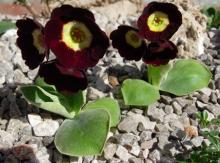
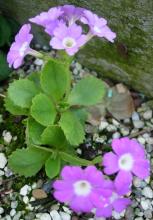
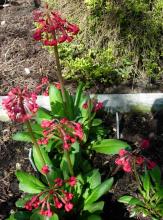
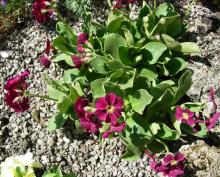
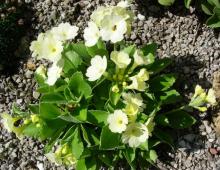
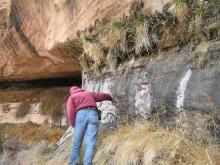
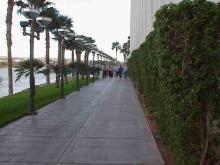
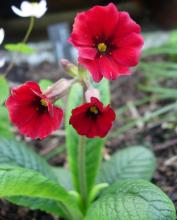
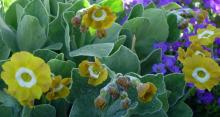
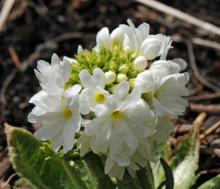
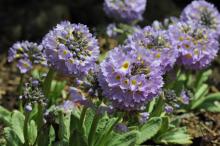
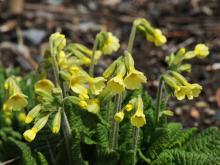
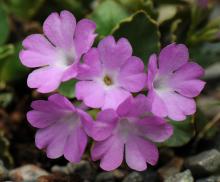
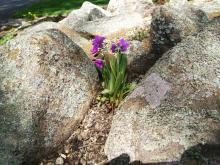
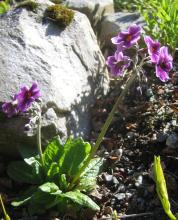
Primula maximowiczii is the best "newcomer" among Primula to me for years! That is a species to try for sure ;D
The first here is this, probably P denticulata.